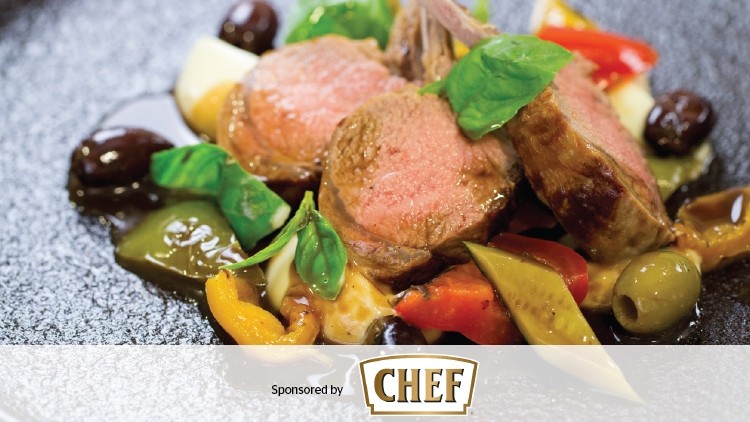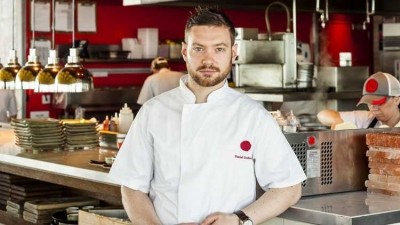The lovely bones: The case for ready made stock

It’s tough in kitchens and indeed the wider restaurant business. Finding and retaining skilled staff is tricky, soaring property costs means space is tight, and wages and the price of raw ingredients are only going one way. So now is the time to re-evaluate what’s made in-house and what’s bought in.
Stock is a good place to start. Bones are expensive, but not that expensive. In fact, the cost of buying in Nestlé Professional’s CHEF® most premium All Natural Stocks is only marginally higher than buying the ingredients that would be needed to make it in-house. However, chefs need to factor in all the other costs that come with making stock in-house.
Labour is the big one. Hacking through bones, dicing veg, cooking or reducing stocks is a full-time job in some larger kitchens, and lifting boxes of bones and huge pots of bubbling stock can be dangerous to boot. Then there’s utilities. Some stocks need to cook for more than 12 hours and be reduced for longer, which has implications for energy bills. Other considerations include refrigeration (CHEF® stocks are all ambient until opened) and paying for used bones to be taken away.
Once all this is taken into account, even the most high-quality bought-in stocks are dramatically cheaper than their house-made counterparts. There’s always been a strong economic argument against making stock in-house, but what about quality? Chefs are understandably wary of ready-made products but the vast majority of chefs that taste tested CHEF® say they couldn’t tell the difference between home-made stocks and CHEF® All Natural Stocks.
“Chefs are surprised when they taste it. The feedback is always positive,” says CHEF® consultant Andrej Prokes.
All the stocks in the range are made as they would be in a professional restaurant kitchen, only on a larger scale. “We take bones, vegetables and herbs and cook them just like a chef would in their own kitchen,” says Prokes, whose CV includes stints at The Fat Duck and The Ritz.
“We only use natural ingredients and nothing else and our stocks are gluten-free.”
Along with value, Prokes believes quality stocks offer much better consistency, a key ingredient for success within any type of restaurant.
“Even in the best kitchens, it’s very difficult to get stocks exactly the same every time. The quality of the bones differs, the person making it has a bad day... there are a huge number of variables. It’s better to leave it to a specialist that’s not trying to do it between service and other tasks.”
Prokes now considers quality bought-in stocks to be a “must have” product for almost all kitchens.
“Chefs are increasingly looking at stocks in the same way they look at puff pastry: it’s simply impractical to make it in-house.”
CHEF® is poised to launch its first lamb stock, which joins its existing range – All Natural Veal Stock, Chicken Stock, Beef Stock and Shellfish Stock.
“We looked at how much it costs for restaurants to make lamb stock from scratch. If often involves bringing up both chicken and veal stock over lamb bones, so it’s one of the priciest stocks to make,” says Prokes.
CHEF® has worked out a way to make a rich liquid lamb stock using only lamb bones (3kg per litre of stock). The flavour is unmistakably lamb but it does not have a powerful lamb smell, which can be off-putting to some.
“To turn it into a sauce, I recommend reducing by around 25% and adding additional flavourings. You could add fresh herbs, garlic and wine to the pan or roasting juices from the lamb itself. As the name suggests, it’s designed for the chef to add their own touches,” says Prokes, who has devised a recipe (below) that shows off CHEF®’s latest product quality.
Roasted rack of English lamb with char-grilled provençal vegetables and anchovy jus
Serves 4
Ingredients
2 racks of English lamb
1 tbsp olive oil
2g salt
2g pepper
For the anchovy jus
300ml CHEF® Lamb All Natural Stock
2 tomatoes, diced
25g black olives, chopped
3g anchovies, chopped
2 tbsp parsley, chopped
For the char-grilled vegetables
1 courgette, sliced length ways
1/2 aubergine, sliced length ways
1 red pepper, peeled and cut into 4
1 yellow pepper, peeled and cut into 4
50ml extra virgin olive oil
1 bulb of garlic, crushed
4 sprigs of thyme, picked
For the tapenade
100g pitted green olives
10ml extra virgin olive oil
For the pesto
1 bunch of fresh basil
½ bulb garlic
20g Parmesan, grated
20g pine nuts, toasted
30ml extra virgin olive oil
►Preheat oven to 200°C/gas mark 6.
►Blend the pesto ingredients together until smooth
►For the tapenade, pulse the olives and oil together in blender
►Season the lamb racks. In a large, hot sauté pan, heat a tablespoon of olive oil. Place the lamb racks fat side down and allow them to colour
►With lamb racks fat side down, place in the oven for 12-15 minutes
►While the lamb cooks, prepare the char-grilled vegetables. Warm 30ml of the olive oil in a pan with the garlic and thyme until it starts to sizzle
►Toss the vegetables in the remaining oil. In a very hot char-grill pan, sear them until cooked and marinade in the flavoured oil
►Reduce 300ml of the CHEF® Lamb All Natural Stock to 180ml. Add the anchovies, tomatoes, olives and parsley off the heat
►To serve, place a pool of the pesto to one side of the serving plate and a quenelle of the tapenade on the other. Reheat the vegetables in the oven and then place them over the pesto. Carve the lamb into two pieces and place them in the middle of the plate before drizzling with the resting juices and the lamb jus.
View the selection of stocks at www.nestleprofessional.co.uk












